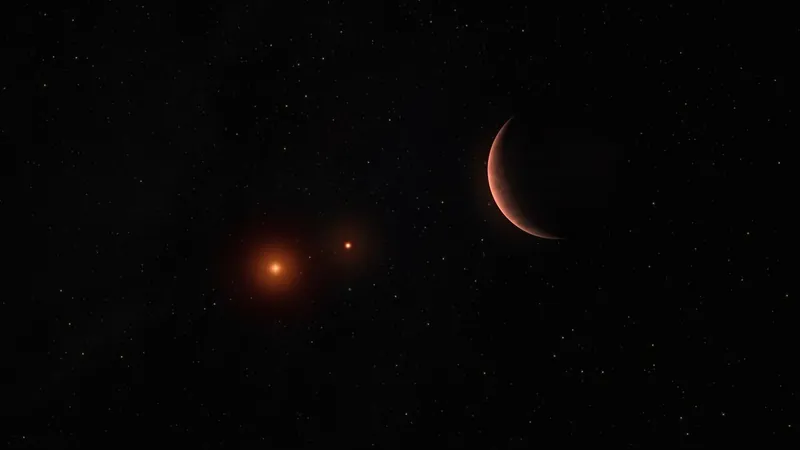
What Living on Tatooine Would Be Like: Insights from a Newly Discovered Exoplanet
2025-05-04
Author: Nur
A Unique Discovery: Planet 2M1510(AB)b
Imagine a planet reminiscent of Tatooine from "Star Wars"—but with a striking twist! Researchers have found an exoplanet orbiting not two stars, but a duo of brown dwarfs, adding an intriguing layer to our understanding of planetary systems.
The Tatooine Connection
In the iconic universe of "Star Wars," Tatooine is famed for its twin suns and enchanting double sunsets. This fictional desert planet orbits both stars in a dynamically stable circumstellar path. Surprisingly, the recently identified 2M1510(AB)b does not follow the typical co-planar orbit that most planets do; instead, it swings in a polar orbit above the brown dwarfs' poles.
The Rarity of Polar Orbiting Exoplanets
Planetary systems in the Milky Way often feature binary stars, with about two-thirds of stars belonging to binary pairings. However, the number of planets that have been discovered in circumbinary orbits remains extraordinarily low—only 16. Among these, 2M1510(AB)b is unique, as it's the first known planet in a polar orbit around a binary system.
What Are Brown Dwarfs?
Brown dwarfs are fascinating objects sometimes described as 'failed stars.' They form through processes similar to stars but lack sufficient mass to ignite fusion in their cores. The pair of brown dwarfs in the 2M1510 system even exhibit an eclipsing behavior, making them an exciting subject of study.
Revolutionizing Our Understanding of Planet Formation
Amaury Triaud of the University of Birmingham, part of the research team, noted, "This polar orbit offers a new perspective on planet formation. These polar orbits are more stable than the traditional co-planar ones we're used to seeing." This raises new questions about the dynamics of planetary systems.
The Dance of Stars and Seasons
Living on a circumbinary planet, like Tatooine, means an entirely different experience of day and night. The length of a day would shift dramatically based on the distance between the stars. Such variations would lead to unique seasonal patterns, influenced by how close the planet is to each star.
Life on 2M1510(AB)b?
Though the circumstances are fascinating, life on 2M1510(AB)b is extremely unlikely. The brown dwarfs are too cool to maintain liquid water, which is essential for life as we know it. However, if the right conditions existed on a circumbinary planet, theorists suggest it could alternatively dip in and out of habitable zones based on its movement around the stars.
Conclusion: A New Frontier in Astronomy
Luke Skywalker's seemingly uneventful Tatooine existence might be more complicated than we think when viewed through the lens of celestial mechanics. As astronomers continue to explore these exotic worlds, the bizarre dynamics of planets in polar orbits offer a treasure trove of insights into the cosmos. Who knows what other secrets lie waiting in the stars?



 Brasil (PT)
Brasil (PT)
 Canada (EN)
Canada (EN)
 Chile (ES)
Chile (ES)
 Česko (CS)
Česko (CS)
 대한민국 (KO)
대한민국 (KO)
 España (ES)
España (ES)
 France (FR)
France (FR)
 Hong Kong (EN)
Hong Kong (EN)
 Italia (IT)
Italia (IT)
 日本 (JA)
日本 (JA)
 Magyarország (HU)
Magyarország (HU)
 Norge (NO)
Norge (NO)
 Polska (PL)
Polska (PL)
 Schweiz (DE)
Schweiz (DE)
 Singapore (EN)
Singapore (EN)
 Sverige (SV)
Sverige (SV)
 Suomi (FI)
Suomi (FI)
 Türkiye (TR)
Türkiye (TR)
 الإمارات العربية المتحدة (AR)
الإمارات العربية المتحدة (AR)